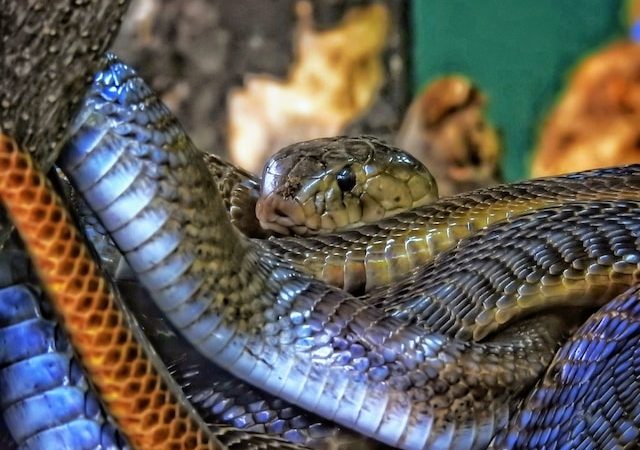Giant snakes, with their impressive size and mesmerizing presence, have captivated our imagination for centuries. But have you ever wondered about the life cycle of these magnificent creatures? In this article, we embark on a journey to explore the fascinating stages of their development, from birth to maturity. Hatching from Eggs: The life cycle of
Giant snakes, with their impressive size and mesmerizing presence, have captivated our imagination for centuries. But have you ever wondered about the life cycle of these magnificent creatures? In this article, we embark on a journey to explore the fascinating stages of their development, from birth to maturity.
- Hatching from Eggs: The life cycle of giant snakes begins with the hatching of eggs. Female snakes lay clutches of eggs, which are incubated until they are ready to hatch. The number of eggs can vary greatly depending on the species, ranging from a few to several dozen. Once the eggs are laid, the mother snake often abandons them, leaving the hatchlings to fend for themselves.
- Juvenile Stage: As the hatchlings emerge from their eggs, they enter the juvenile stage. At this point, they are tiny replicas of their adult counterparts, albeit much smaller in size. They possess the instinctual ability to hunt and capture prey, although their diet mainly consists of smaller animals such as rodents and birds. Juvenile snakes are vulnerable to predation and face numerous challenges as they navigate their environment.
- Growth and Development: As time passes, the juvenile snakes begin to grow rapidly. With each successful hunt, they gain strength and size, shedding their skin periodically to accommodate their expanding bodies. Adequate nutrition and suitable habitat are crucial during this stage to ensure healthy growth. The growth rate varies among species, but giant snakes generally experience a significant growth spurt during their early years.
- Maturation: The process of maturation in giant snakes is a remarkable transformation. As they reach adulthood, their size becomes more pronounced, and their reproductive capabilities develop. Different species mature at different ages, with some reaching sexual maturity as early as three to five years, while others may take a decade or more. During this period, giant snakes become fully equipped to participate in the breeding process.
- Reproduction: Reproduction in giant snakes is a complex and often solitary affair. Male snakes engage in courtship rituals to attract potential mates, which can include intricate displays and physical combat with other males. Once a female is successfully courted, she will mate and store the male’s sperm internally. Giant snakes are oviparous, meaning they lay eggs rather than giving live birth. The female will find a suitable location to deposit her eggs, where they will be incubated until they hatch.
- Continuing the Cycle: Once the eggs are laid, the cycle begins anew. The mother snake will provide no parental care, leaving the eggs to develop and hatch on their own. The offspring will emerge as vulnerable hatchlings, beginning their own journey through life. The survival rate for baby snakes can be low due to predation and other environmental factors. Only a small percentage will reach maturity and carry on the legacy of their species.
Understanding the life cycle of giant snakes offers a glimpse into the intricacies of nature’s wonders. It reminds us of the incredible resilience and adaptability of these reptiles as they navigate the challenges they face from birth to maturity. However, it is crucial to approach these creatures with caution and respect, allowing them to thrive in their natural habitats undisturbed.
In conclusion, the life cycle of giant snakes is a testament to the marvels of the natural world. From the humble beginnings of hatching from eggs to the awe-inspiring size and maturity, these magnificent creatures embody the wonders of growth and adaptation. By appreciating their life cycle, we can deepen our understanding of their importance and strive to protect their existence for generations to come.

















Leave a Comment
Your email address will not be published. Required fields are marked with *